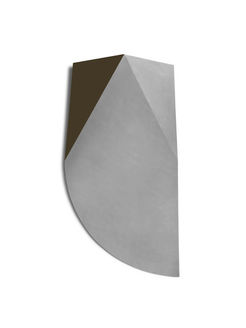2012_A New Way to Look
2012.5.10 - 2012.5.24
Information
A NEW WAY TO LOOK5
Alex Katz
David Rodriguez Caballero
Paul Rousso
Nicholas Bodde
Mark Khaisman
May 10 - 24 , 2012
Opening Reception: Thursday, May 10, 5:00 p.m
Art before the 20th century represented one’s sight and feelings on the canvas in an abstract or concrete manner. The general public observed these art creations with great consideration to elements of composition, form, and color. Works of art produced before the 20th century were dependent on stylistic conventions to bring about a sense of originality between objects depicted and its viewers. With this intention, artists made it clearer to understand their art. Their works were naturally understood and accepted as the most conventional and familiar forms of art that were already executed and verified. Works before the 20th century relied on stylistic conventions that underwent trial and error, and tended not to deviate from the norm.
Change in contemporary art was triggered by social upheavals which were caused by the two world wars; World War I in 1914 and World War II in 1939. The beautiful utopia that intellectuals dreamed of were deconstructed by the wars and the industrial civilization abated as they felt pride. Artists thus distrusted tradition and rational thought, and promoted anti-culture and anti-art resistance against established arts. Especially in the late 20th century when revolutionary artist Marcel Duchamp’s experimental works emerged, art history went through great change. Artists began to work with new media and produced numerous experimental artworks, breaking down established frames. These works were meaningful because it was a clear attempt to overcome modernism’s cold-hearted, prosaic logic tightly dividing genres, appealing to only the familiar multi-faceted media and its sources. This was just the beginning to exploring the potential of art, and the process of polishing the new art through innumerable trials and errors. In every age different art mediums served to seek the public’s sympathy and this genre specifically used understanding to persuade society.
The new style of work must draw the audience into new diverse spectacles, and arouse tension and sincere understanding through densely interwoven structures. Works produced in this style should not be a mere arrangement of novel subject matter, and were previously associated with media in harmony and equilibrium. These works were based on experiences society underwent to persuade the public. Their artists cannot be recognized only through art for art’s sake. In this sense work extending to the domain of new visual art through popularity and diversity is a new challenge in art history, and must also aim to reduce the gap between the values of the public and contemporary art.
Nevertheless, we often feel pain when we encounter contemporary art. There is no pleasure in appreciating the art. While this is known, we feel and experience lots of intellectual, emotional feelings. Gallery Yeh presents an exhibition featuring works by five world-class artists who have always made new attempts. The gallery offers viewers an opportunity to appreciate their revolutionary and audacious works that should be once considered.
Profile
Alex Katz, born in 1927, is considered the best living artist of the late 20th century. He studied at the Cooper Union in New York between 1946 and 1949, and at the Skowhegan School of Painting and Sculpture between 1949 and 1950. His works include collections at the Museum of Modern Art, Metropolitan Museum of Art, Whitney Museum of Art in New York, Smithsonian Institution in Washington, and Tate Modern in London. He utilized abstract expressionism and color field painting in the 1950s, represented pop art’s color and understated emotion in the 1960s. He is most recognized for the reflection of times and transcendental high style, seeking the typical ‘American style’ fusing figuration with abstraction and tradition with avant-garde. Katz is currently credited as one of the best living artists.
David Rodríguez Caballero, born in 1970, has represented the height of minimalism through aluminum work, blurring the boundaries between sculpture and painting. With brass mass on the wall, he worked with polyptych style. When fully unfolded, some of his works measures three meters long. Inspired by light effects in Greek sculpture and architecture, where light becomes part of a sculptural work, Caballero explored the effects of new material contacting light. This then became the basis of his aluminum work. His work brings about mysteries with light refraction and its direction.
Paul Rousso, born in 1959, directs his attention to discarded elements such as money and magazine pages. Influenced by pop art using motifs from capitalistic consumer culture for pure artistic themes, he produced visual and descriptive, figurative and abstract, creative and borrowed, ironical and serious works. These works address pre-existing images, visual themes of mass media, and figures and signs.
Nicholas Bodde, born in 1962, attracts worldwide attention as an artist whose work was introduced to world-class art exhibitions and art fairs such as Art Cologne, FIAC, and Art Basel. His work is also popular among collectors in the international art market. His work consists of numerous color fields with different heights on aluminum plates. The color fields appear spacious or thin, crossing the entire plane. These color fields generate an exquisite structure in a mystic harmony. There is no concrete structure sensed in his work, only rich colors and spontaneous expressions that stimulate imagination, engendering more profound abstraction.
Mark Khaisman, born in 1958, presently works in the United States after completing his doctorate at Moscow Architectural Institute. He creates images by applying layers of translucent packing tape on clear Plexiglas panels, utilizing its light and shade. In the Pattern series he reinterprets photographic and film contexts, and with his own perspective and new media he adds intellectual insight and emotional exploration.



